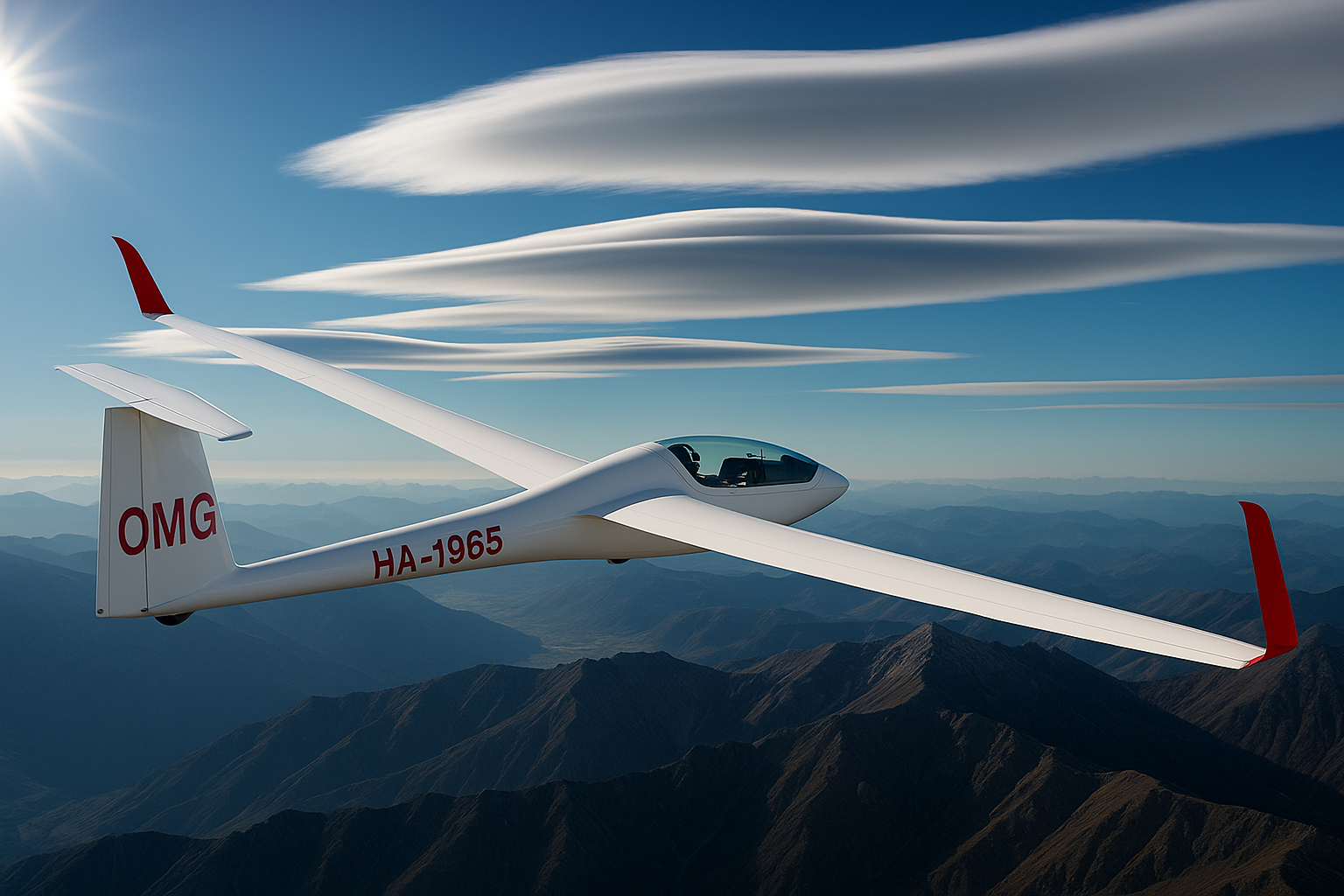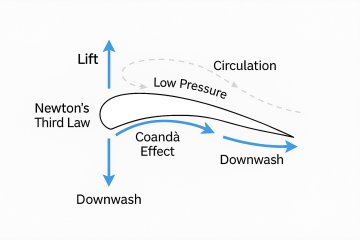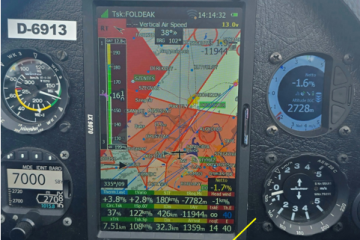
Thermals vs. Wave: Advanced Considerations for Cross-Country Pilots
Most glider pilots learn to soar in thermals and may spend most of their cross-country hours relying on convective lift. Transitioning to wave flying, however, requires a different mindset, preparation, and understanding of the atmosphere. Below, we highlight the key technical differences.
Thermals — Convective Energy
Thermals are the product of convective instability:
- Temperature profile: Environmental lapse rate steeper than the dry adiabatic lapse rate triggers rising parcels of warm air.
- Wind profile: Light to moderate winds are favorable. Excessive shear or strong winds tend to shear off or disrupt thermals.
- Structure: Rising bubbles evolve into columns of lift; often capped by cumulus cloud base. Blue conditions occur in dry air masses.
Flying technique:
- Pilots must constantly center the core, adapting bank angle (30–45° typical) and airspeed (minimum sink + safety margin).
- Efficiency depends on decision-making: when to commit, when to abandon a weak climb, and how to optimize cross-country progress.
- Thermalling is inherently dynamic — position must be continuously corrected relative to drift and competing gliders.
Wave — Standing Atmospheric Oscillations
Wave lift forms under a very different set of conditions:
- Temperature profile: A stable layer or inversion above the mountain ridge is essential to set up standing waves.
- Wind profile: Laminar flow, typically 20–40 knots at ridge height, oriented roughly perpendicular to the terrain. Increasing wind speed with altitude further supports wave propagation.
- Structure: Downstream of the ridge, a train of alternating ascending and descending air masses forms. Lenticular clouds may cap the crests; rotor clouds mark turbulent zones below.
Flying technique:
- Entry is typically via ridge lift, climbing into the rotor zone and carefully transitioning into smooth wave above.
- Once established, no circling is required; the aircraft can climb in straight flight, sometimes at several meters per second, in silky-smooth air.
- Airspeed management is critical: higher true airspeeds at altitude, combined with strong winds, demand conservative safety margins.
- Oxygen is mandatory above 10,000 ft; appropriate clothing and cockpit preparation are vital due to extreme cold at altitude.
Operational Differences
| Aspect | Thermals 🌤️ | Wave 🌊 |
|---|---|---|
| Atmospheric profile | Unstable, convective | Stable with inversion |
| Wind requirements | Light to moderate | Strong, laminar, perpendicular to ridge |
| Lift structure | Buoyant columns, drift with wind | Stationary standing waves, extend downwind |
| Flight technique | Circling, active centering | Straight flight, positioning in band |
| Ceiling | Capped by inversion/cloudbase | Stratospheric potential, subject to airspace and oxygen |
| Hazards | Blue days, broken cores, congestion | Rotor turbulence, hypoxia, icing at altitude |
Why Wave Is Different
For pilots accustomed to thermalling, wave flying introduces challenges beyond pure stick-and-rudder skills:
- Meteorology: Interpreting soundings, lapse rates, and wind profiles to identify wave setups.
- Flight planning: Oxygen logistics, clothing, contingency planning for strong winds and potential high-altitude diversions.
- Airspace awareness: Wave climbs may exceed FL195/FL240; clearance and coordination with ATC are essential.
- Decision-making: Managing transitions between rotor, ridge, and wave requires discipline and experience.
Conclusion
Thermals remain the foundation of most cross-country soaring, but wave offers a different dimension of flight — one that rewards preparation, patience, and precise execution. For experienced pilots seeking new challenges, understanding the contrast between convective and wave lift is the first step toward safely expanding your operational envelope.
































